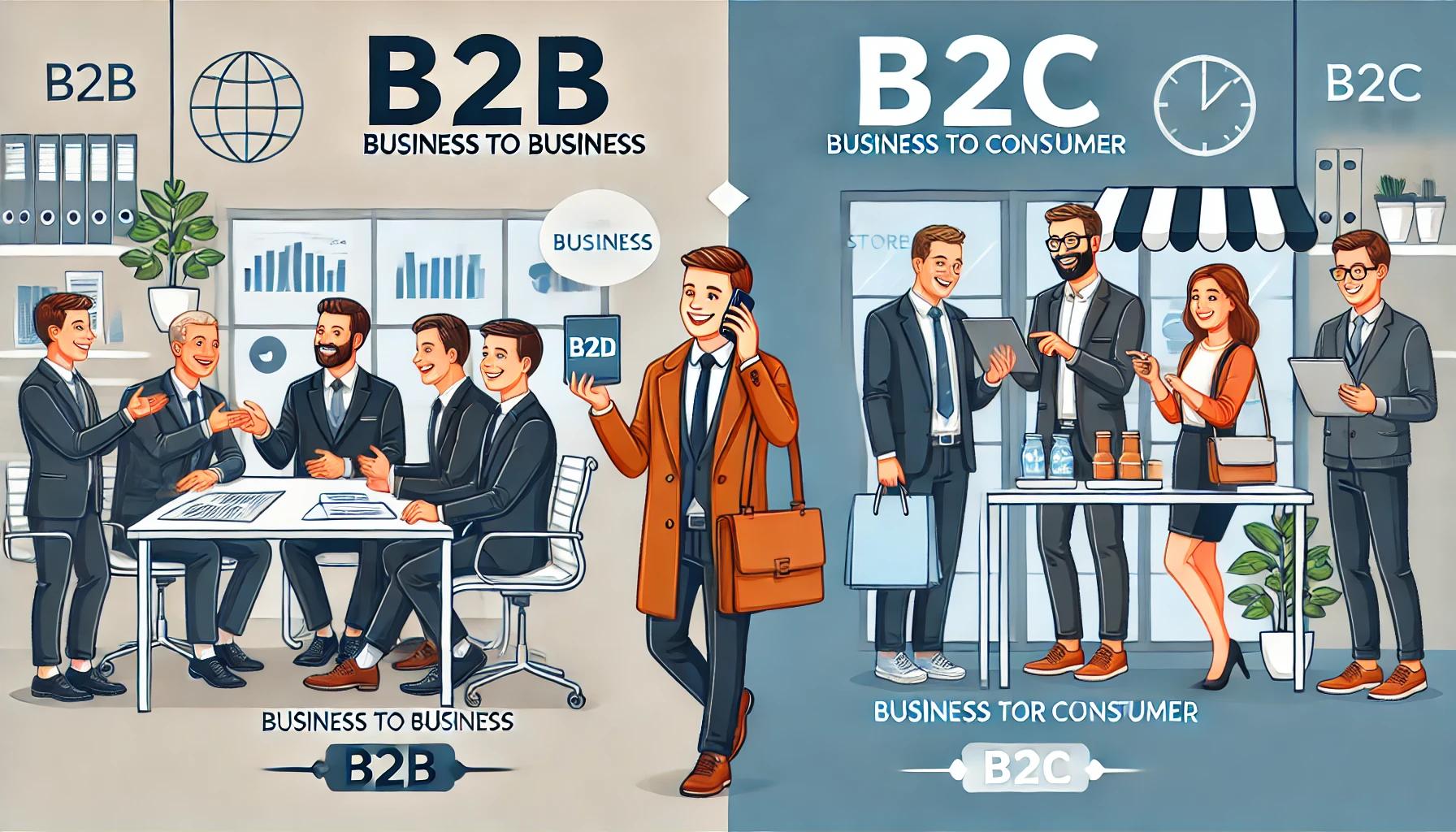B2B and B2C: What’s the Difference? Key Differences and Examples
B2B (Business to Business) and B2C (Business to Consumer) are two fundamental business models, each with unique characteristics and audience interaction strategies. Understanding the differences between these models is essential for developing effective marketing and sales strategies.
Key Differences Between B2B and B2C
1. Target Audience
- B2B: In this model, companies sell their goods or services to other businesses. The clients are usually corporate customers who either use the products internally or resell them. A well-known example of a B2B company is Oracle, which provides software solutions for other businesses .
- B2C: In B2C, businesses sell directly to end consumers, who purchase for personal use. A great example is Apple, which sells smartphones and gadgets to individual customers .
2. Sales Cycle
- B2B: The B2B sales cycle tends to be longer, often involving multiple stages, such as negotiations, requests for proposals, and contract signing. Deals may take weeks or even months, as companies carefully evaluate the offers and negotiate terms.
- B2C: B2C sales are usually much quicker. Consumers typically make purchasing decisions within minutes or days, especially for frequently purchased items like clothing or food .
3. Pricing Structure
- B2B: In B2B, prices often vary depending on the volume of purchases, long-term contracts, or specific deal terms. For instance, equipment manufacturers might offer discounts based on the size of the order or the length of the partnership.
- B2C: In B2C, pricing is usually fixed and aimed at the mass market. Promotional offers and discounts are essential tools for attracting customers .
4. Marketing Strategy
- B2B: B2B marketing focuses on building long-term partnerships. Channels like industry-specific trade shows, conferences, and personalized proposals are common. The emphasis is on logic and the financial benefits for businesses.
- B2C: B2C marketing is more emotional and focuses on personal needs and desires. Advertising often appeals to convenience, uniqueness, and the consumer’s lifestyle. Common channels include social media, email campaigns, and traditional media advertising .
5. Purchase Volume
- B2B: In B2B, purchase volumes are typically much higher. For example, a company might order millions of dollars worth of computers for all its employees.
- B2C: In B2C, consumers purchase smaller quantities. An individual customer usually buys one or a few units of a product for personal use.
6. Examples of B2B and B2C Companies
- B2B: A prime example of a B2B company is SAP, which provides enterprise resource planning software for businesses. Another example is Caterpillar, a manufacturer of heavy machinery used in construction and agriculture.
- B2C: An example of a B2C business is Amazon, which sells products directly to consumers worldwide. Zara is another B2C example, offering clothing and accessories to individual shoppers .
Key Takeaways
The main differences between B2B and B2C revolve around the target audience, sales cycle, purchase volume, and marketing strategies. While B2B companies focus on building long-term business relationships and offer complex, technically advanced products, B2C businesses cater to individual consumers and aim for quick sales. Understanding these differences is crucial for businesses to develop more accurate and successful marketing and sales strategies.
Sources:
- Oracle Corporation
- Apple Inc.
- Harvard Business Review - Differences between B2B and B2C Sales
- McKinsey & Company - Key Aspects of Pricing Strategy in B2B and B2C
- Forbes - The Emotional Connection in B2C Marketing
- HubSpot - B2B Marketing vs. B2C: Key Differences
- Amazon & Zara: Retail giants
